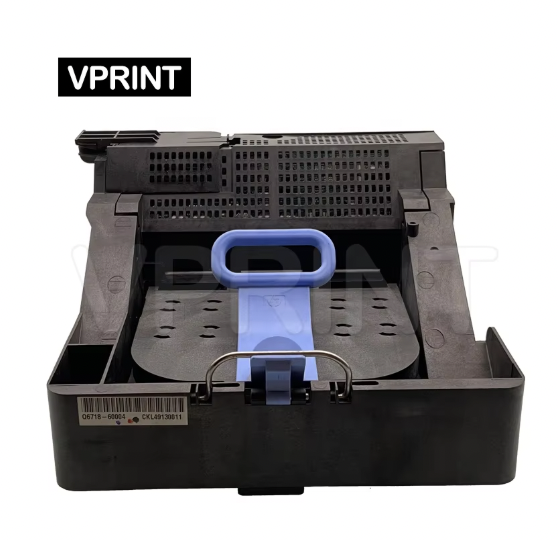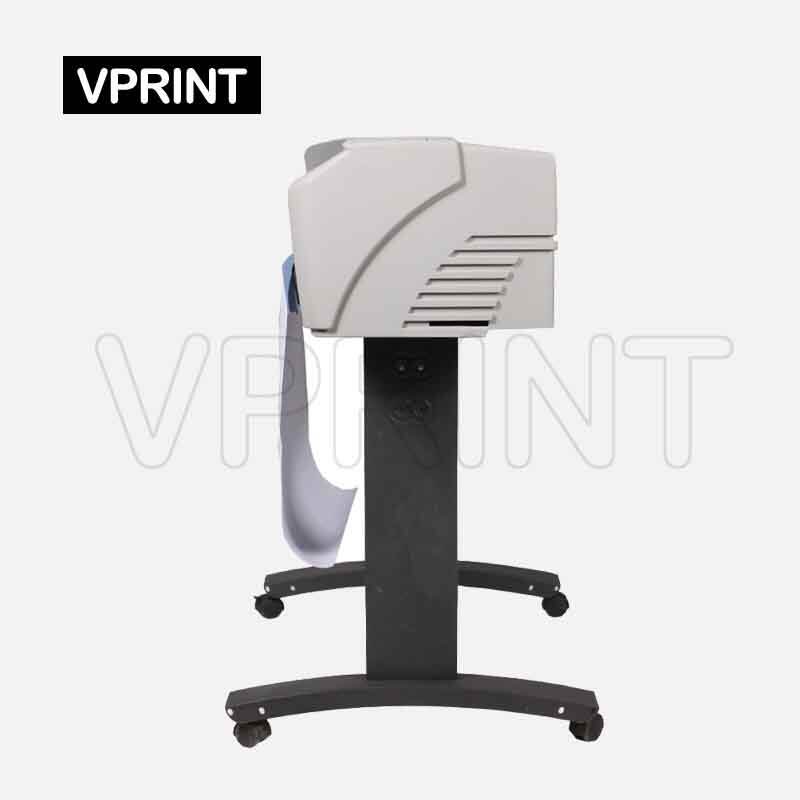Plotter Technologia: Rewolucjonizowanie Nowoczesnego Projektowania i Inżynierii
Ewolucja od Narzędzi Analogowych do Cyfrowych Narzędzi Dokładnościowych
Plotter technologia przeszła znaczną transformację od systemów analogowych do cyfrowych, głęboko wpływając na dziedzinę projektowania i inżynierii. Początkowo, plotery analogowe były kluczowymi narzędziami dla inżynierów i architektów, oferując nową precyzję w tworzeniu szczegółowych rysunków. Jednakże, wprowadzenie komputerowego wspomagania projektowania (CAD) w latach 80. było kluczowym punktem, który przyspieszył przechodzenie na cyfrowe narzędzia dokładnościowe. Ta ewolucja umożliwiła większą dokładność, szybkość i elastyczność w projektowaniu i sporządzaniu złożonych szkiców.
Postępy technologiczne w ciągu dekad znacznie zwiększyły możliwości ploterów, prowadząc do ery, w której współczynniki dokładności przekraczają 99%. Dzięki tym ulepszeniom procesy projektowania stały się bardziej wydajne, co eksponencjalnie zmniejsza czas od koncepcji do druku. Na przykład zadania, które kiedyś trwały godziny, mogą teraz zostać wykonane w minutach, co pokazuje prędkość i niezawodność nowoczesnych ploterów. Statystyki ujawniają imponujący wzrost efektywności projektowania, ponieważ plotery mogą wykonywać zadania z większym stopniem precyzji, bezproblemowo obsługując złożone projekty.
Optymalizacja CAD i dokładność inżynierskich rysunków
Optymalizacja CAD odgrywa kluczową rolę w poprawie funkcjonalności plotterów, znacząco wpływa na precyzję projektów inżynierskich. Nowoczesne oprogramowanie CAD optymalizuje układy projektowe, zapewniając, że złożone projekty są wykonywane z wyjątkową dokładnością. Firmy inżynieryjne, które przyjęły CAD w połączeniu z zaawansowanymi plotterami, zgłaszają widoczne poprawy. Te firmy podzieliły się danymi wskazującymi na ponad 30% wzrost dokładności w tworzeniu projektów, co pozwala im podejmować się bardziej skomplikowanych projektów strukturalnych z większym spokojem i efektywnością.
Przyszłość technologii plotterów wygląda obiecująco, napędzana ciągłym postępem narzędzi CAD. Z każdym wydaniem oprogramowanie CAD staje się bardziej intuicyjne i zdolne, ułatwiając tworzenie coraz bardziej złożonych i dokładnych projektów inżynieryjnych. Ten trend nie tylko optymalizuje obecne możliwości plotterów, ale również rozszerza granice przyszłych innowacji technologicznych. W miarę postępu narzędzi CAD, technologia plotterów będzie kontynuować swoją ewolucję, wzbogacając praktyki projektowe i inżynierskie bezprecedensową precyzją i szybkością.
Zaawansowane funkcje kształtujące przyszłość Plotter Systemy
Możliwości obsługi wielu mediów
Współczesne plottery ewoluowały znacząco, teraz wyposażone w możliwość obsługi różnych nośników, w tym papieru, tkaniny i winylu. Ta adaptowalność zwiększa ich przydatność w różnych zastosowaniach projektowych. Plotter użytkownicy coraz częściej preferują modele oferujące funkcje multi-medialne, co jest wynikiem trendów rynkowych wskazujących na stały wzrost zainteresowania rozwiązaniami projektowymi wielofunkcyjnymi. Na przykład, raport wskazuje, że firmy integrujące plotery multi-medialne mogą spełniać szersze potrzeby klientów, rozwijając tym samym zakres swoich usług. Ta zdolność jest szczególnie korzystna dla przedsiębiorstw dążących do oferowania kompleksowych rozwiązań projektowych, od tradycyjnej drukarki po niestandardowe produkowanie tekstyliów i tablic reklamowych.
Systemy Dostarczania Farb Następnych Generacji
Najnowsze osiągnięcia w dziedzinie systemów dostarczania tuszu ustanawiają nowe standardy dokładności kolorów i jakości druku. Te systemy poprawiają precyzję w odtwarzaniu kolorów, jednocześnie redukując zużycie tuszu, co prowadzi do zwiększenia kosztowej efektywności dla firm. Dane branżowe wskazują, że firmy przyjmujące te technologie dostrzegają znaczące zmniejszenie zużycia tuszu, a także oszczędności kosztów wynoszące nawet 30%. Ponadto te systemy przyczyniają się do zrównoważonego rozwoju, minimalizując marnotrawstwo, co jest istotnym krokiem naprzód w praktykach drukowania zgodnych z zasadami ochrony środowiska. Dla firm skupionych na ekologicznych rozwiązaniach, te innowacje oferują zarówno korzyści ekonomiczne, jak i zmniejszenie wpływu na środowisko.
Zrównoważone rozwiązania plotterowe dla projektowania świadomego ekologii
Redukcja odpadów dzięki inteligentnemu użytkowu materiałów
Wdrożenie inteligentnych technologii materiałów w sporządzaniu wykresów może znacząco zminimalizować marnotliwość, czyniąc ją kluczowym elementem projektowania zrównoważonego. Nowoczesne plotery obecnie incorporyруją wydajność materiałową, precyzyjnie używając tylko niezbędnych ilości podczas procesu sporządzania wykresów. Zgodnie z różnymi raportami, firmy przyjmujące te praktyki zmniejszyły marnotliwość materiałów nawet o 50% w swoich operacjach, co jest zgodne ze zmianą w przemyśle w kierunku rozwiązań przyjaznych środowisku. W miarę jak inżynieria materiałów kontynuuje swoją ewolucję, spodziewamy się jeszcze większych innowacji w zrównoważonych rozwiązaniach do sporządzania wykresów. Te postępy obsługują nie tylko firmy świadome ekologicznych aspektów, ale również są zgodne z preferencjami konsumentów wobec produktów, które przyczyniają się do mniejszego wpływu na środowisko.
Energetycznie Efektywne Modele Operacyjne
Oszczędne w użyciu zasoby operacje plottera są kluczowe w redukowaniu emisji dwutlenku węgla dla firm. Nowoczesne technologie plotterów osiągnęły znaczące postępy w porównaniu z tradycyjnymi systemami, obniżając zużycie energii o do 30% na urządzenie. Badania wykazują, że te zmniejszenia mogą istotnie obniżyć ogólne wpływy na środowisko i koszty eksploatacji dla przedsiębiorstw. Certyfikaty branżowe i standardy zrównoważonego rozwoju dalszym ciągu wzmacniają popyt na bardziej przyjazne dla środowiska plottery, zachęcając producentów do opracowywania bardziej oszczędnych energetycznie modeli operacyjnych. Te postępowe zmiany świadczą o zaangażowaniu przemysłu plotterów w minimalizację wpływu na środowisko, gwarantując, że firmy będą mogły spełniać zarówno wymagania regulacyjne, jak i oczekiwania konsumentów co do zrównoważonej działalności.
Cyfrowa integracja w nowoczesnych przepływach pracy inżynierskich
Współpraca oparta na chmurze i udostępnianie plików
Technologia chmury obliczeniowej przekształciła współpracę w zespołach inżynierskich, oferując płynny dostęp do zasobów udostępnionych i wzmaczając możliwości pracy zdalnej. Narzędzia takie jak Autodesk BIM 360 i Microsoft Teams odegrały kluczowe role w ułatwianiu efektywnego dzielenia się plikami i zwiększaniu współpracy zespołu. Rozwój rozwiązań opartych na chmurze umożliwia zespołom inżynierskim rozproszonym geograficznie pracę synchroniczną. Badania wykazały znaczące poprawy w produktywności, przy czym badania pokazują 40% szybsze kończenie zadań dzięki zoptymalizowanym przepływom pracy w chmurze. Ta zmiana technologiczna nie tylko demokratyzuje dostęp do kluczowych danych, ale także zmniejsza zależność od fizycznych biur, promując elastyczność i wydajność w procesach inżynierskich.
Naprawa i śledzenie wydajności włączona przez IoT
Internet Rzeczy (IoT) przekształca obszar konserwacji plotterów, umożliwiając proaktywne i efektywne zarządzanie tymi maszynami. Dzięki integracji z IoT, plottery mogą teraz dostarczać danych w czasie rzeczywistym na temat swojego statusu operacyjnego, co znacząco redukuje czas simply i ulepsza harmonogramy konserwacji. Studium McKinsey podało spadek simply equipment o do 50% po wdrożeniu rozwiązań IoT. Ta technologia rewolucjonizuje śledzenie wydajności plotterów, pozwalając na systemy predykcyjnej konserwacji, które mogą identyfikować potencjalne problemy zanim się verschlimmerung, co optymalizuje długowieczność i wydajność. W perspektywie przyszłej, potencjał predykcyjnej konserwacji za pomocą IoT nadal rośnie, z obiecującymi jeszcze większą integrację i automatyzację w technologiach inżynieryjnych.
Aplikacje w dużym formacie transformujące projektowanie przemysłowe
Produkcja szkiców architektonicznych w skali
Drukarki wielkoformatowe przekształciły sposób, w jaki są tworzone szkice architektoniczne, pozwalając na dokładne skalowanie i uwzględnianie szczegółów w projektowaniu przemysłowym. Te drukarki ułatwiają tworzenie wysokiej jakości, szczegółowych planów architektonicznych, które są niezbędne przy realizacji dużych inwestycji budowlanych. Biura architektoniczne, które wdrożyły zaawansowaną technologię drukarek do swoich procesów, zgłaszają znaczące poprawy w szybkości i dokładności. Na przykład firma może skrócić czas produkcji szkiców o maksymalnie 50% dzięki użyciu nowoczesnej drukarki, co znacząco poprawia harmonogramy projektów. Ponadto te urządzenia minimalizują błędy typowe dla rysowania ręcznego, oferując procesy automatycznej weryfikacji projektu, co gwarantuje, że wydruki są zarówno precyzyjne, jak i spójne – kluczowe aspekty w złożonych projektach.

Dokumentacja inżynieryjna międzydziedzinowa
Rola nowoczesnych plotterów w inżynierii rozszerza się poza poszczególne dyscypliny, ponieważ wspomagają one kompleksową dokumentację przekrojową. Ta zdolność technologiczna jest kluczowa w dziedzinach inżynieryjnych, gdzie współpraca między różnymi specjalistami jest niezbędna dla powodzenia projektów. Na przykład, korzystając z plotterów, zespół inżynierów budowlanych może bezproblemowo integrować swoją pracę z schematami inżynierii elektrycznej i mechanicznej, co poprawia komunikację i spójność w ramach projektów. Ponadto, dzięki wsparciu zaawansowanego oprogramowania i narzędzi, plottery poprawiają dokładność i dostępność dokumentacji, umożliwiając inżynierom łatwe dzielenie się i edytowanie dokumentów. Taka płynna integracja i współpraca prowadzi do bardziej efektywnych przepływów pracy i lepszych wyników projektowych, czyniąc plottery niezastąpionym narzędziem w współczesnej inżynierii.
Najnowsze trendy w narzędziach wizualizacyjnych w inżynierii
Funkcje asystencji w projekcie napędzane sztuczną inteligencją
Sztuczna inteligencja jest coraz częściej integrowana z narzędziami projektowymi, aby pomagać inżynierom w podejmowaniu precyzyjnych i opartych na danych decyzji w efektywny sposób. Narzędzia korzystające np. z algorytmów uczenia maszynowego mogą generować alternatywy projektowe, optymalizować struktury oraz nawet przewidywać, jak różne czynniki wpływają na wydajność. Przykłady takich narzędzi wzbogaconych sztuczną inteligencją to oprogramowanie do projektowania generatywnego, które zostało już zastosowane w branżach, takich jak lotnictwo czy motoryzacja, w celu stworzenia bardziej efektywnych rozwiązań projektowych. Implikacje przyszłej integracji SI w procesy projektowe są ogromne, obiecując krótsze terminy realizacji projektów i zwiększoną innowacyjność. W miarę dalszego rozwoju technologii sztucznej inteligencji, uważam, że transformacja tradycyjnych procesów inżynierskich będzie się pogłębiała, prowadząc do bardziej kreatywnych i elastycznych środowisk projektowych.
Możliwości integracji Przemysłu 5.0
Koncepcja Przemysłu 5.0 wprowadza zwiększoną współpracę człowieka z robotem w inżynierii, łącząc ludzką ekspertyzę z precyzją i powtarzalnością robotów. Ten przeskok paradigmatyczny ma ponownie zdefiniować technologie plotterów i narzędzia wizualizacyjne inżynierskie, pozwalając im na szybsze dostosowywanie się do dynamicznych środowisk. W miarę jak Przemysł 5.0 набiera sily, plottery i narzędzia wizualizacyjne będą prawdopodobnie podkreślać większą personalizację i interakcję użytkownika, łącząc luki między światem cyfrowym a fizycznym. Widzę potencjalne obszary badań wynikające z dziedzin takich jak ergo-design dla poprawionych interfejsów człowiek-maszyna oraz rozwój wysoko specjalizowanych robotów współpracy. Wraz z przyjęciem Przemysłu 5.0 te innowacje zmienią praktyki inżynierskie, tworząc zrównoważoną symbiozę między ludzką kreatywnością a efektywnością technologiczną.
Najczęściej zadawane pytania
Jakie są kluczowe postępy w technologii plotterów?
Kluczowe postępy obejmują narzędzia cyfrowe z precyzyjnymi funkcjami, optymalizację CAD, możliwości obsługi multimediów, systemy dostarczania tuszu nowej generacji oraz konserwację włączoną przez IoT.
Jak współczesne plotery ulepszają praktyki projektowania przyjaznego ekologii?
Współczesne plotery ulepszają projektowanie przyjazne środowisku poprzez implementację inteligentnego użytkowania materiałów, redukcję odpadów i stosowanie modeli operacyjnych oszczędzających energię.
Jaka jest rola sztucznej inteligencji w projektowaniu inżynierskim z wykorzystaniem ploterów?
Sztuczna inteligencja wspomaga tworzenie dokładnych i opartych na danych projektów, generowanie alternatyw, optymalizację struktur oraz przewidywanie czynników wydajności, znacząco transformując przepływy pracy.
Spis treści
- Plotter Technologia: Rewolucjonizowanie Nowoczesnego Projektowania i Inżynierii
- Zaawansowane funkcje kształtujące przyszłość Plotter Systemy
- Zrównoważone rozwiązania plotterowe dla projektowania świadomego ekologii
- Cyfrowa integracja w nowoczesnych przepływach pracy inżynierskich
- Aplikacje w dużym formacie transformujące projektowanie przemysłowe
- Najnowsze trendy w narzędziach wizualizacyjnych w inżynierii
- Najczęściej zadawane pytania

